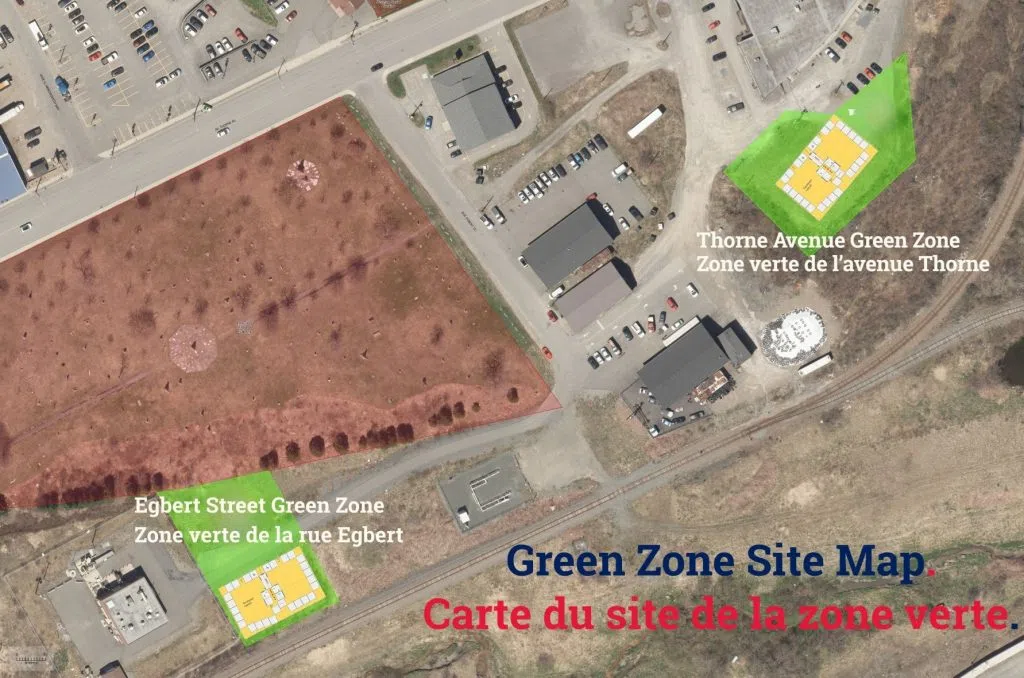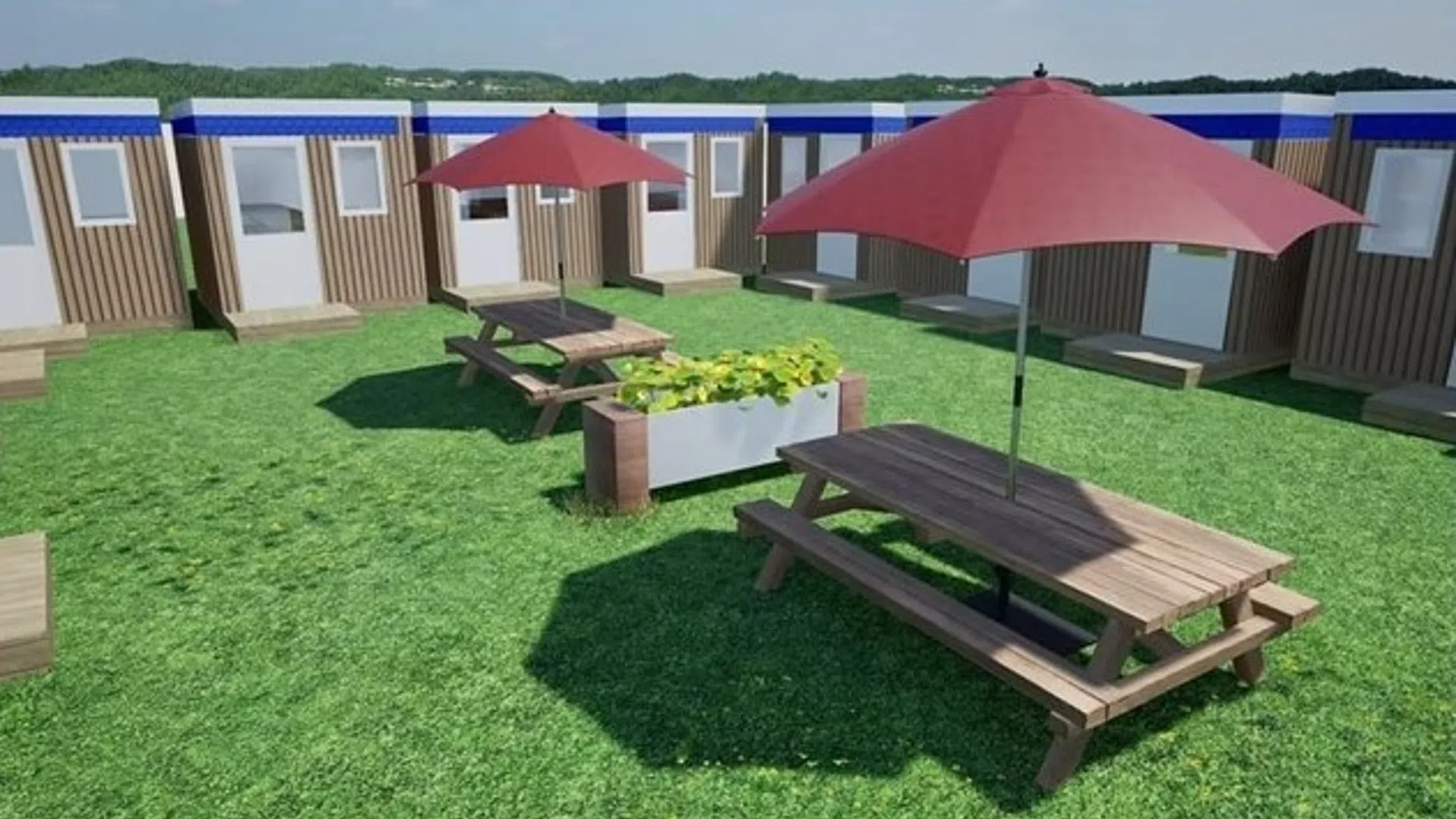More than 50 transitional housing units are coming to Saint John’s east side for those experiencing homelessness.
Council voted Tuesday to designate two city-owned properties on Thorne Avenue and Egbert Street as “green zones.”
They have also entered into an agreement with Fredericton-based 12 Neighbours to develop and operate the transitional housing communities.
Marcel LeBrun, founder of 12 Neighbours, said their Neighbourly Homes model features courtyard-style housing that can be built quickly.
“We’re able to build these in a very automated way so we can keep the costs down to around $7,500 per unit, but they’re highly insulated, winterized buildings built for Canada,” LeBrun told reporters on Wednesday.
What do the units look like?
Each heated unit is eight feet by eight feet and includes a bed, lighting, internet and secure entry. They also have an Android tablet that gives residents access to services and entertainment.
There will be a shared space dedicated as washroom and shower facilities, laundry facilities, a community kitchen and a multi-purpose space.
In addition, there will be 24/7 on-site staff and wraparound supports for the 27 residents living in each of the communities, according to LeBrun.
“The most evidence-based, peer-reviewed thing that you can do to reduce crime, to alleviate health-care pressure and reduce homelessness in a city is supportive housing,” said LeBrun.
“Everyone tends to focus on buildings and structures, and we can talk about that, but what’s more important is the social infrastructure that we put in, which has to do with how a place is actively managed, how individuals are supported and what we want to create is community.”

Stable housing the end goal
LeBrun said the goal of the transitional housing communities is to give those experiencing homelessness support and a place to live so they can eventually move into more stable housing at their own pace.
“If you have a timeline, you take away the sense of safety and you bring anxiety because all of a sudden it’s like, ‘I’ve got to get out of here because my time is up,'” he said.
“You don’t put that timeline on, but you do encourage people to move forward. For some, it could be a couple of weeks, for some it could be a long time, depending on their situation.”
Residents will not have to pay anything when they first move in, but LeBrun said they are in discussions with the province and the city about transitioning to subsidized rent.
“Part of housing stability is you have to learn to pay rent, and that’s what’s exciting about the subsidized rental is you pay rent and it’s graduated, so as you earn income, your rent goes up and you learn to handle higher rent. That’s just part of that journey of becoming stably housed,” he added.
Figures from the Human Development Council show 417 individuals experienced homelessness for at least one day in April, with 270 of those considered chronically homeless.
Funding for the communities
Earlier this year, the city was awarded $3.5 million in federal and provincial funding through the Unsheltered Homelessness and Encampments Initiative. The two-year funding agreement will directly support the creation and operation of the two sites.
Mayor Donna Noade Reardon said Saint John was the only community in New Brunswick to receive this funding.
“This is a testament to our strong community partnerships, government collaboration, and the leadership demonstrated through council’s approval of the Housing for All Strategy, and it also reflects the work of our staff,” she said.
“We deeply appreciate the compassion, collaboration and contributions from all levels of government and the frontline agencies that play an essential role in providing life-saving support to our most vulnerable community members.”
Officials hope to have the Egbert Street site up and running by Aug. 1 and the Thorne Avenue site by Dec. 1.








